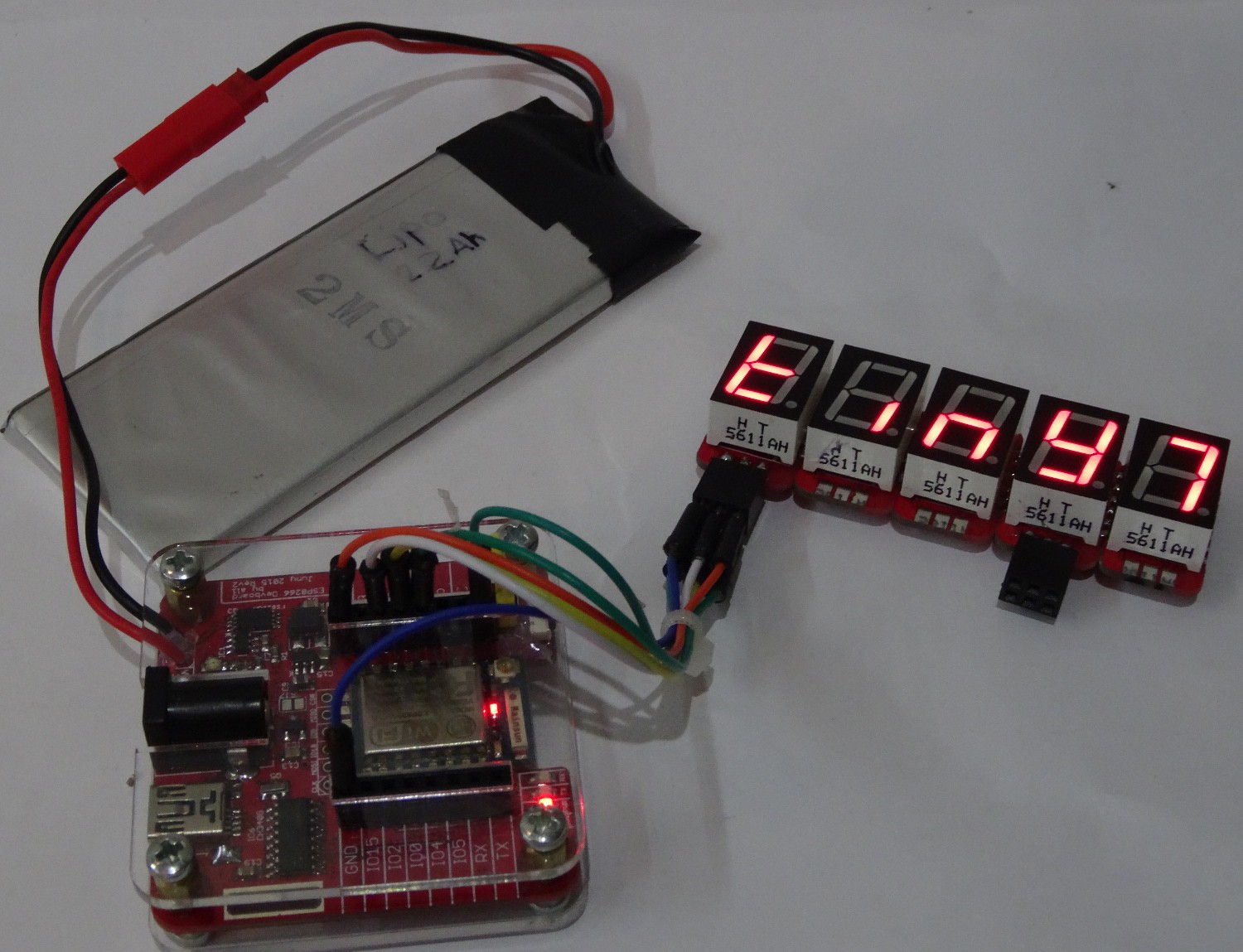The tiny7 does also work with the Arduino IDE and the ESP8266. And five digits do work well. And a supply voltage of only 3.3V is also working.
The library for writing chars is still very experimental - as you can see by the code used:
#include <tiny7.h>
#define S_SDO 12
#define S_CLK 14
#define S_LTH 16
tiny7 myTiny7;
void setup()
{
myTiny7.begin(0, S_SDO, S_CLK, S_LTH);
myTiny7.show(7,0); // ptint 7
myTiny7.show(20,0); // print Y
myTiny7.show(16,0); // print n
myTiny7.show(19,0); // print i
myTiny7.show(18,0); // peint t
delay(1000);
}I will try to add a better way to show strings or larger numbers soon. I am thinking of something like: myTiny7.print("string"). [If you are interested: The ESP-Board used on the picture can be fined here: #ESP8266 (ESP-07/12) Dev Board ]
 Alex
Alex
Discussions
Become a Hackaday.io Member
Create an account to leave a comment. Already have an account? Log In.
does it work on the radio module as well? ;)
Are you sure? yes | no
Well if I would program the radio module with the Arduino IDE this
should work. But so far I programmed the radio module with Atmel Studio
and there is no working library for tiny7 and Atmel Studio yet (But this
is on the to-do-list).
Are you sure? yes | no
I'm using the usbasp to program the module over the arduino IDE :) had to add some hardware files. Needs some work too
Are you sure? yes | no